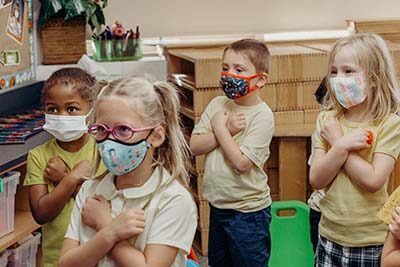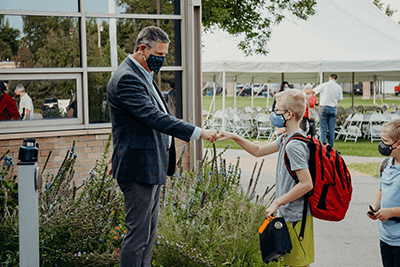October 28, 2021

from Natalie Waters Seum, Director of Admission and Communication
Once per month throughout the school year, a member of the Institutional Advancement team will be writing a guest Head’s Message in place of Dr. Bill Hudson’s. We hope these articles provide families with additional perspectives from throughout the MPA administrative team.
If you’ve been through the admission process in recent years, you’ll recognize this question: “What drew you to MPA? What do you want out of a partnership with a school that will help your child grow and learn?” In short, we’re asking families what they are searching for in a new school community.
In my (brief) time in admission, I’ve come to realize there are three relatively simple things that most families seek. They want their child to be:
- known and understood—not just a number;
- loved for who they are—not who others thing they should be; and
- challenged, appropriately—not too much and not too little.
When we searched for a kindergarten for my now-junior, Henry, we were looking for those very same things. My mother-in-law, Robbie Seum, was the Upper School director at the time and it was generally assumed that MPA would be the perfect fit for our family. The sticker shock spurred us to cast a wider net and I brought her with me to every open house in the east metro. Afterward, I wallpapered my dining room walls with Post-it flip charts that detailed the pros and the cons of every school we explored. In the end, it was her wisdom—the wisdom of a trusted friend—that truly helped us make the right decision. As friends, and family in this case, our values were aligned. She knew that we were searching for Henry to be known, understood, loved for who he is, and challenged appropriately and she knew that’s what MPA offered.
Fast forward to this week and I have the privilege of thanking 33 “Robbies” for recommending MPA to a friend, family member, or colleague who completed the application process and perhaps enrolled. Along with the thank you notes are either tuition credits or refunds that range from $125 to $1,000. I’m only able to thank the current families whom we are aware of—there are so many more of you recommending MPA in your networks that we’ll never be able to properly thank, so please consider this a personal note of thanks to you.
Both internal MPA data and external research show the importance and power of these community member referrals. Internally, it continues to be the most important way families come to MPA and the primary indicator that a family will eventually enroll. Why? It is all about aligning values. People in your network have similar values as you—you are searching for similar things—and they trust your recommendation as someone who has found what they are searching for. Nielsen data shows that “92% of respondents trusted referrals from people they knew.” None of this is news to me and it’s likely not news to you either because you very likely came to MPA due to a community member referral, just like we did.
The families of our 138 new students this year are having an incredible experience according to the New Family Survey. On a scale of 1-5, they rate their transition a 4.7 on average. They rate their experience with the admission process a 5.0. On that same survey, they named 40 faculty and staff who have been particularly helpful and 30 students—what an incredibly warm and welcoming community we have!
If you would like to share MPA in your network and perhaps receive a tuition credit next year at this time, please learn how here. Or, simply reach out to me at nwatersseum@moundsparkacademy.org. Sharing your love of MPA with people who are searching is, by nature, a generous act of kindness—you are trying to help the prospective family find a wonderful school community and a second home. And I promise we will take exceptionally good care of them.
 from Dr. Bill Hudson, Head of School
from Dr. Bill Hudson, Head of School from Dr. Bill Hudson, Head of School
from Dr. Bill Hudson, Head of School from Dr. Bill Hudson, Head of School
from Dr. Bill Hudson, Head of School from Dr. Bill Hudson, Head of School
from Dr. Bill Hudson, Head of School

 After several months of quiet and sometimes eerie peacefulness, the hallways and classrooms are abuzz with energy and joy this week. And so, it should be as the MPA family comes together again for a new school year. With 139 new students and an overall enrollment of 577, much of our time over the last week has been dedicated to building community and developing relationships with one another.
After several months of quiet and sometimes eerie peacefulness, the hallways and classrooms are abuzz with energy and joy this week. And so, it should be as the MPA family comes together again for a new school year. With 139 new students and an overall enrollment of 577, much of our time over the last week has been dedicated to building community and developing relationships with one another.
 by Dr. Bill Hudson, Head of School
by Dr. Bill Hudson, Head of School